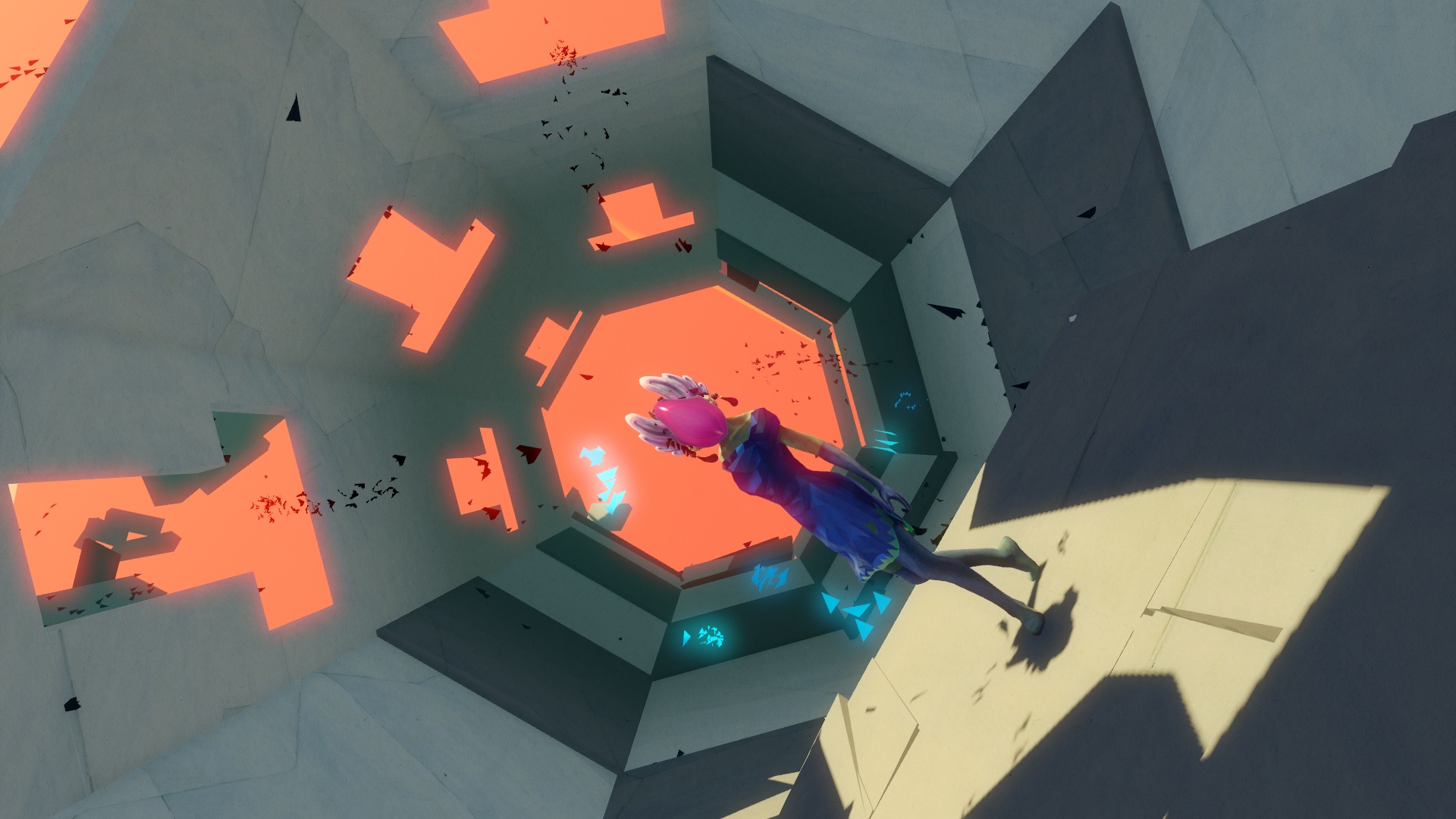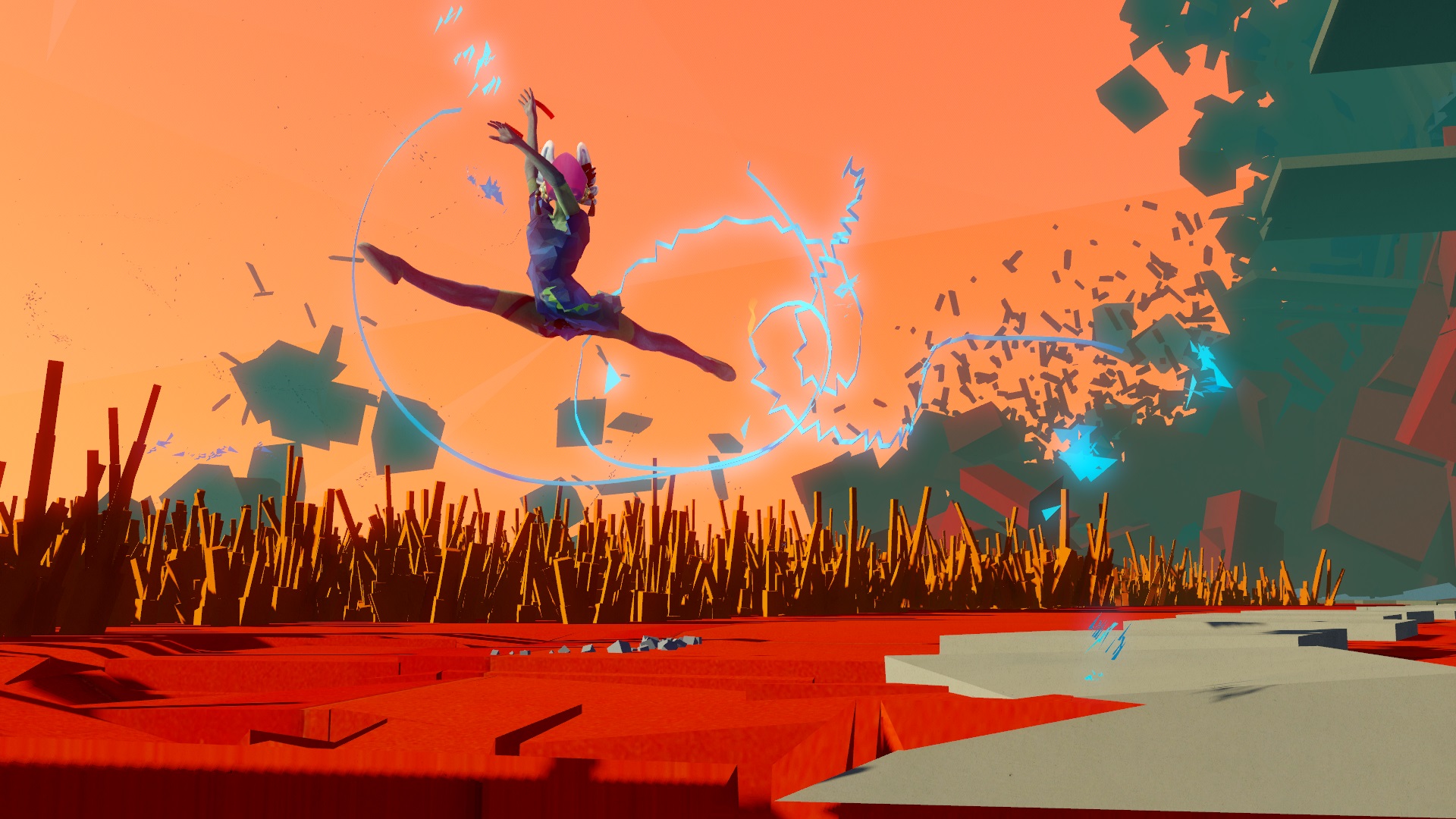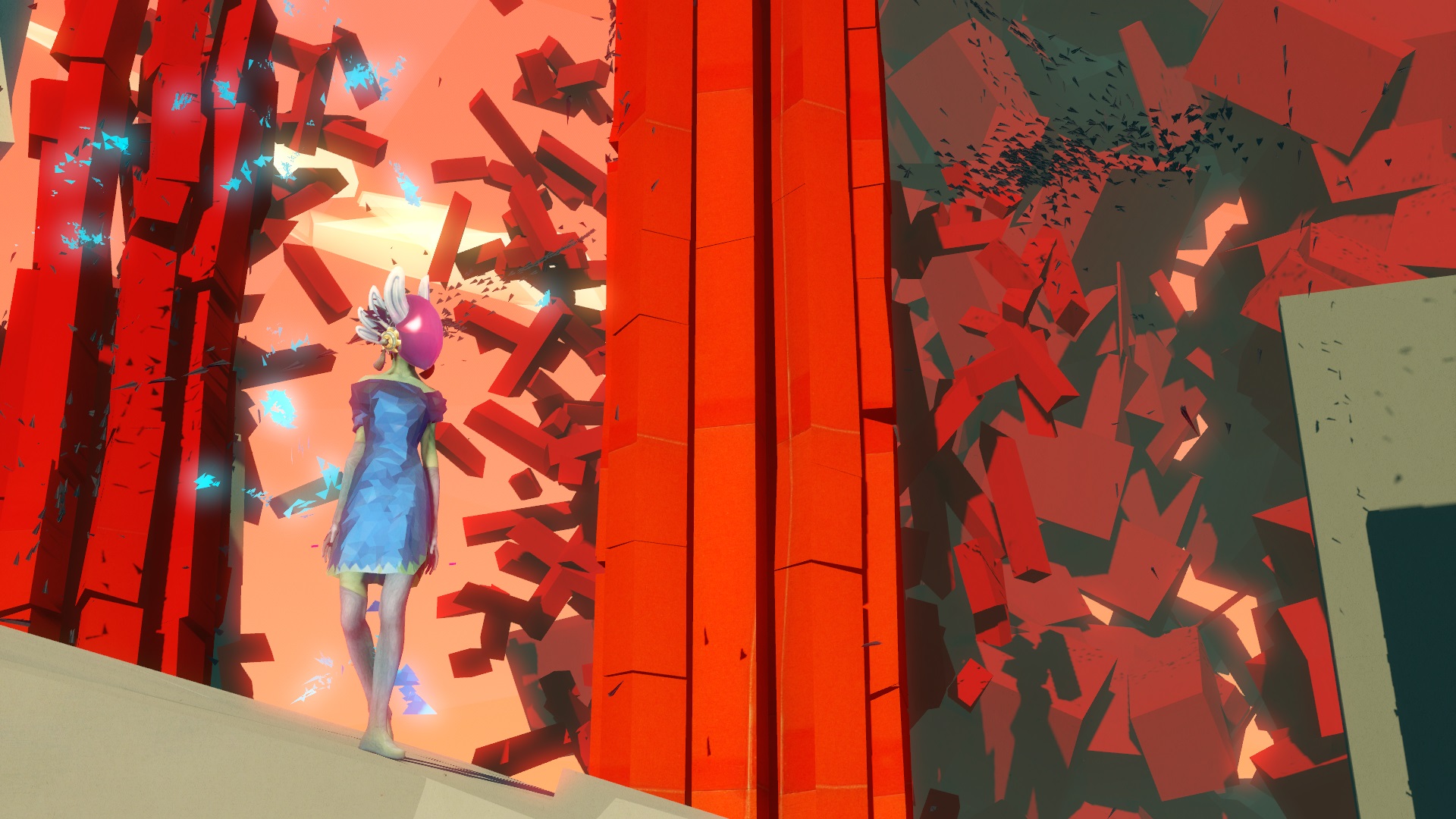This post originally appeared on Feminist Frequency and is crossposted here with permission.
The first thing you notice about the new PlayStation 4 game Bound is just how mesmerizing and intriguing the animation is. Most of the game takes place in a constantly shifting psychological landscape which you navigate as a young dancer. It’s clear that the developers captured and studied the motions of a real dancer, and at times, the character’s movement might seem overly elaborate and even distracting. It can be easy to interpret her flourishes of movement as suggesting a very gendered, traditionally feminine kind of delicacy or weakness. But it soon becomes clear that there’s nothing weak or delicate about the way this character moves. As she goes on a quest to confront memories from her own childhood, dancing is a way of finding the strength within herself that she needs in order to face her difficult past.
She needs that core of strength and stability because the universe around her seems so unstable. The game’s whole world appears to be in a constant state of flux, platforms materializing and disappearing, the ground shifting and undulating like the surface of the ocean. It’s a wonderful visual effect that lends the experience of playing Bound a feeling of venturing into uncertainty. Unfortunately, this effect also contributes to times when you’re unclear about whether the game is even functioning as intended. You might make a jump, for instance, only to see the platform disappear from under your feet and send you plummeting to your death. Although these moments are rare, they were kinda frustrating and occasionally I wasn’t sure if it was intentional or not.
Interestingly, there is no combat in the game, only defense. As you move through the environments, you encounter hazards that try to bind you and restrict your movement. You protect and liberate yourself from these dangers by dancing. Like the environmental instability, this works well on a metaphorical level, suggesting that the character is finding the strength within herself to persevere on her quest. It’s rare to come across a game in which the mechanics and the narrative complement each other as naturally as they do in Bound. The gameplay feels as if it was designed specifically to support the themes of the story, and as a result, it pulls you deeper into the main character’s journey.
But despite serving the story well, these mechanics aren’t robust enough to make for a satisfying experience. You can just sort of randomly press buttons to dance and shield yourself from dangers, and while the freedom of movement and creative expression that this suggests is great, the fact that you can always fumble your way through these encounters also makes them a bit unfulfilling.
At the end of each area, you encounter a memory from the main character’s past. At first, these memories are in a million little pieces and can’t be clearly seen, but as you move the camera and explore the space, the image comes together. Like many aspects of Bound, there’s a powerful symbolism here that may strongly resonate with players who have had to confront painful or traumatic memories from their own past. It reflects the ways in which those memories are often fractured, and how sometimes all that remains are images of moments that left some lingering imprint on us.
With its focus on painful childhood memories, Bound is reminiscent of Minority Media’s excellent game Papo & Yo. But where that game had a clear narrative with a strong resolution, Bound leaves things more open to interpretation. Of course, there’s nothing inherently wrong with that, and oftentimes in life there aren’t clear resolutions and easy answers. But still, Bound’s ending feels like it arrives prematurely, as if you haven’t really gotten to the heart of what you’ve been exploring and investigating all along.
Still, even if Bound feels incomplete in the end, the journey is striking and memorable thanks to the game’s mesmerizing visuals and animations. Its psychological explorations are missing that bit of soul they needed to leave you feeling fulfilled, but there’s something beautiful and inspiring in its images of a woman confronting her own memories and liberating herself from the painful restrictions of her past.
Images via Santa Monica Studios
Anita Sarkeesian is an award winning media critic and the creator of Feminist Frequency.
—The Mary Sue has a strict comment policy that forbids, but is not limited to, personal insults toward anyone, hate speech, and trolling.—
Follow The Mary Sue on Twitter, Facebook, Tumblr, Pinterest, & Google+.












Published: Aug 15, 2016 11:12 am